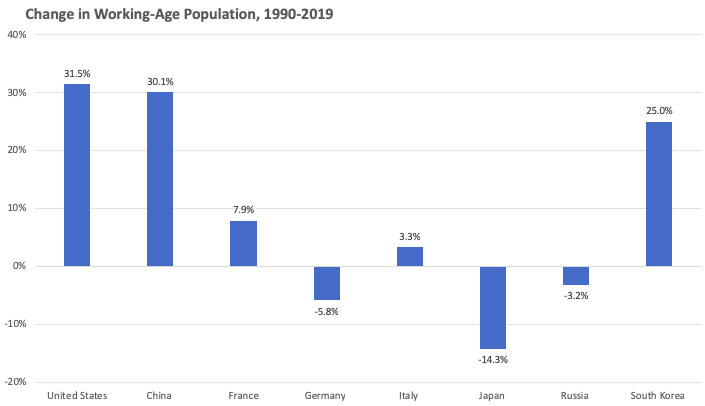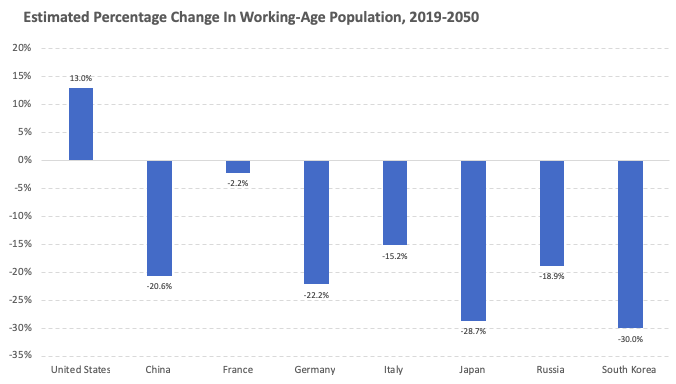What Else Matters?
Here’s what happened to a bunch of big economies over the last 30 years:

And here’s what happens over the next 30 years:

A simple question when thinking about future growth: What else matters more than this?
All economic growth is just population growth plus productivity growth. Half of that equation turns ugly over the next 30 years in a way it wasn’t over the last 30 years. Or 50. Or 200.
The rebuttals:
1. This forecast is wrong. The Baby Boom that began in the 1940s wasn’t predictable before it happened. A new one could come out of nowhere again. (On the other hand, fertility could just as easily fall more than expected.)
2. Immigration is a wildcard. A common comment to this forecast is, “And that assumes America and Europe will still have immigration.” Yes, current political winds blow against immigration. But the odds of a new party rule turning them in the other direction are just as good, especially when looking at a three-decade period.
3. Productivity will make up the difference. The weight of having fewer workers can be offset if the remaining workers become more productive at what they do. Economists like Robert Gordon argue that productivity growth in the decades ahead likely won’t come close to previous generations. That idea being wrong, and something like AI and robots and medical advances becoming wildly more succesful than we’re now envisioning, is the best hope for turning the scary forecasted population declines into something manageable.
America is leaps ahead of others. But if, aging-wise, China and Europe become the equivalent of Japan, and Japan becomes the equivalent of Del Boca Vista, everyone will feel it.
Charlie Munger has a line that might help here. “To expect a lot is irrational. You’re likely to be happier and gain felicity by aiming low.”